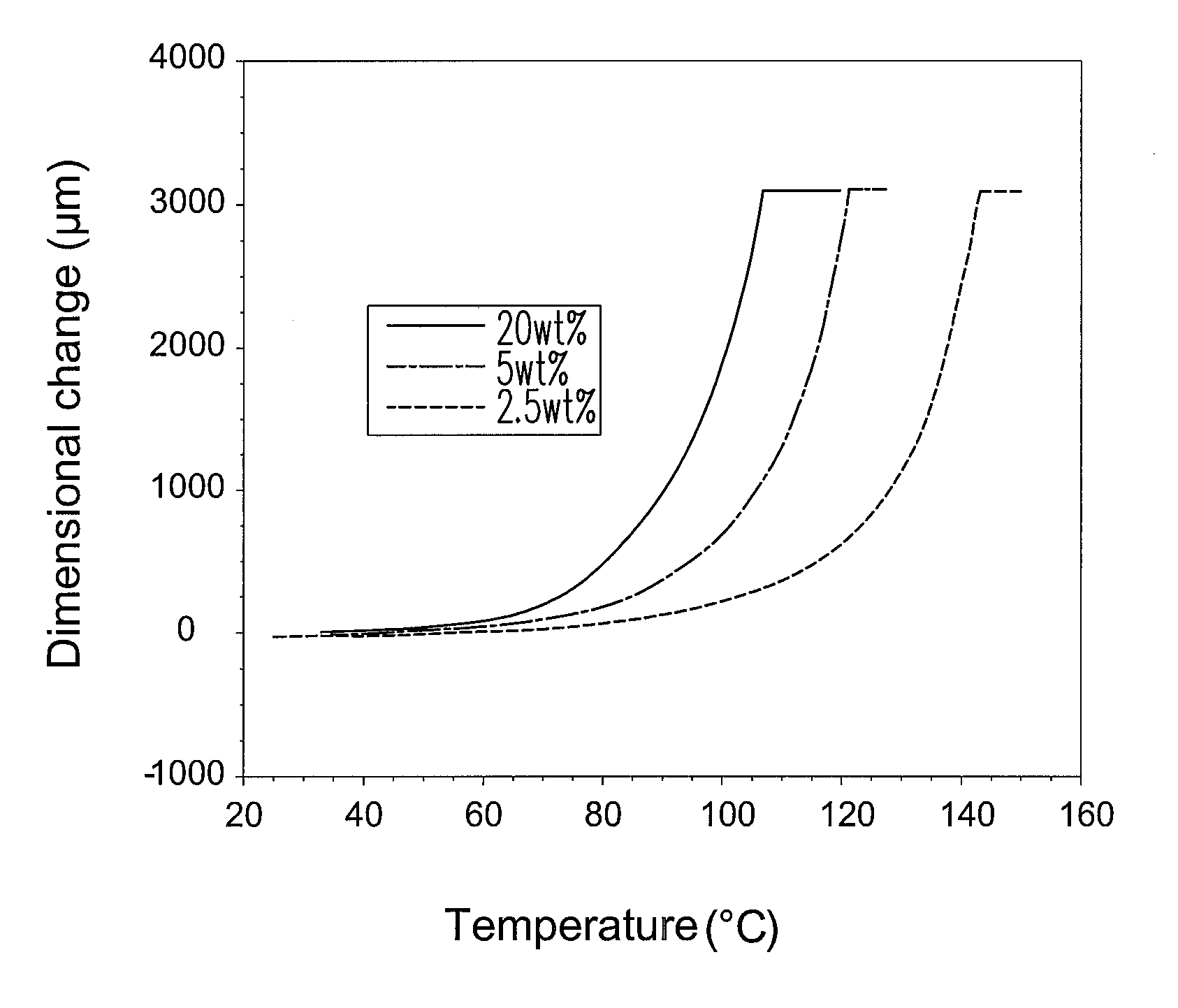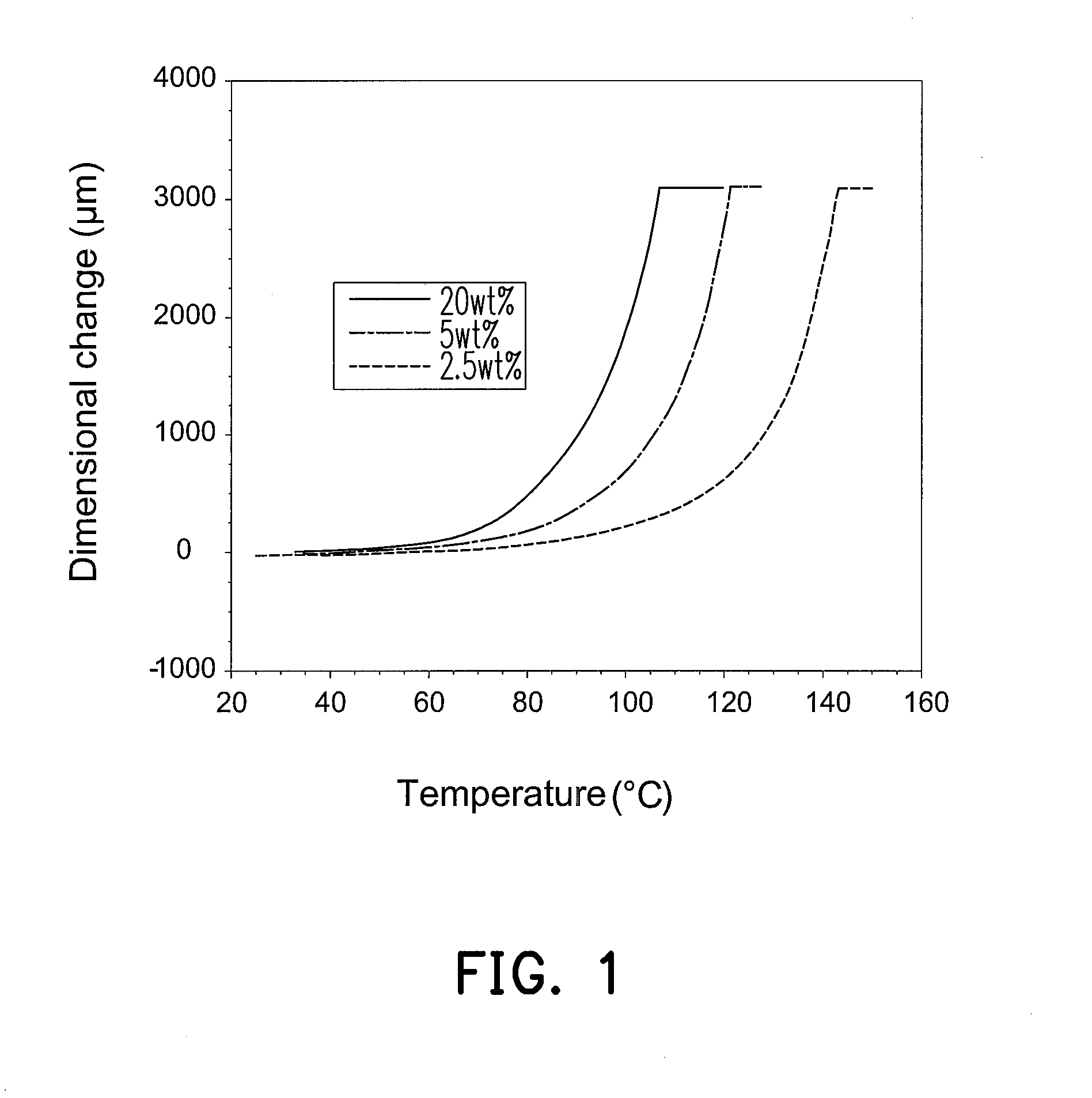Organic/inorganic hybrid composite proton exchange membrane
a proton exchange membrane and organic/inorganic hybrid technology, applied in the field of organic/inorganic hybrid composite proton exchange membranes, can solve the problems of affecting the performance and the possibility of swelling or distortion of the proton exchange membrane in high temperature water is rather unlikely to happen, so as to achieve good water retention capacity, mechanical strength, and conductivity. good
- Summary
- Abstract
- Description
- Claims
- Application Information
AI Technical Summary
Benefits of technology
Problems solved by technology
Method used
Image
Examples
example 1
[0028]Unmodified porous carbon (activate carbon) of 20 parts by weight per 100 parts by weight of the total solid contents is distributed into a Nafion solution (NAF DE2020CS manufactured by DuPont), so as to form an ink. The ink is well stirred and cured for 12 hours. After that, the stirred and cured ink is coated onto glass and then evaporated. The membrane is soaked in H2SO4(aq) with the concentration of 1N at 80° C. for an hour or more, so as to activate the proton substitution reaction. Next, the membrane is soaked in excess pure water at 80° C. for an hour or more, so as to fully remove the acid and obtain a black soft membrane. Characteristics of the membrane are then measured. Measurement of flexibility and glass transition temperature is shown in Table 1, and the variation of dimensional as changing with temperature is indicated in FIG. 1. Water uptakes and water volume swelling ratios are shown in Table 2, FIG. 2, and FIG. 3. Measurement of conductivity at a variety of re...
example 2 to example 4
[0029]The membrane is formed by the same method as described in Example 1, whereas the unmodified porous carbon (activate carbon) of 10 parts by weight, the unmodified porous carbon (activate carbon) of 5 parts by weight, and the unmodified porous carbon (activate carbon) of 2.5 parts by weight are relatively distributed in Example 2, Example 3, and Example 4.
example 5 and example 6
[0030]The membrane is formed by the same method as described in Example 1, whereas the unmodified porous carbon is respectively replaced by ECP 600 (carbon black, NSA (net surface area): 1200 m2 / g) of 5 parts by weight and CL-08 (carbon black, NSA: 210 m2 / g, manufactured by China Synthetic Rubber Corporation) of 5 parts by weight in Example 5 and Example 6.
PUM
| Property | Measurement | Unit |
|---|---|---|
| temperature | aaaaa | aaaaa |
| operational temperature | aaaaa | aaaaa |
| operational temperature | aaaaa | aaaaa |
Abstract
Description
Claims
Application Information
 Login to View More
Login to View More - R&D
- Intellectual Property
- Life Sciences
- Materials
- Tech Scout
- Unparalleled Data Quality
- Higher Quality Content
- 60% Fewer Hallucinations
Browse by: Latest US Patents, China's latest patents, Technical Efficacy Thesaurus, Application Domain, Technology Topic, Popular Technical Reports.
© 2025 PatSnap. All rights reserved.Legal|Privacy policy|Modern Slavery Act Transparency Statement|Sitemap|About US| Contact US: help@patsnap.com



